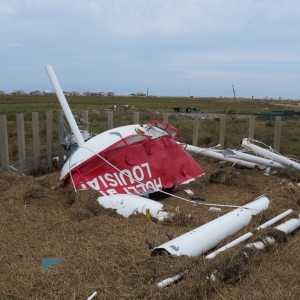Federal Water Tap, September 21: EPA Updates Clean Water Act Affordability Guidance
The Rundown
The EPA proposes a more nuanced examination of how sewer system upgrades affect the finances of people in the lowest income brackets. Bureau of Reclamation models show a higher risk of low reservoir levels in the Colorado River basin. The State Department expands a Lower Mekong basin partnership that focuses on water management. Democrats introduce a bill to clean up pollution in communities of color and poverty. A Michigan Democrat introduces a bill that would require the Defense Department to follow the strictest water quality standards for PFAS cleanups. Florida wants permitting authority under the Clean Water Act for dredging and filling wetlands. And lastly, the EPA hosts a webinar on the effects of wildfires on drinking water quality and water treatment.
“So this isn’t an urban issue versus a rural issue. This is not a red issue versus a blue issue. This is the economy, the pillars of America, in farming, fishing, and forests being profoundly affected.” — Sen. Jeff Merkley (D-OR) speaking on the Senate floor about the record-setting fires in his state and what climate change means for the country.
By the Numbers
$100 billion: Funding in a Democratic proposal for pollution cleanup and water and sanitation service in communities of color and poverty. The money is directed toward cleanup of abandoned mines, former military bases, and Superfund sites. There are line items for removing lead pipes ($20 billion), providing water and sanitation to Indian and Alaska Native homes ($3 billion), and offering grants for septic system and water well repairs ($10 billion). The House bill was introduced by Rep. Deb Haaland (D-NM), while the companion bill was introduced by Sen. Cory Booker (D-NJ). (Congress)
News Briefs
Affordability Guidance
The U.S. Environmental Protection Agency released a draft document that updates the agency’s guidance for considering how the cost of sewer improvements to meet Clean Water Act requirements will affect utility finances and low-income residents.
The EPA says that the document will guide its assessment of the affordability of sewer and stormwater upgrades and its determination for how long a municipality has to comply with pollution-control requirements. Timetables could be extended for expensive projects that impose a severe financial burden.
Two new metrics will be considered. One examines the financial ramifications for people whose income are in the bottom 20 percent. Previous EPA affordability guidance only assessed the cost of a project for the median household income. Municipalities can also submit information on total water costs, including drinking water.
The second option is to use more sophisticated financial models to evaluate how a project would affect rates over time.
The EPA will host a webinar on September 22 to discuss the guidance. Register here.
Public comments on the proposal are being accepted through October 19. Submit them via www.regulations.gov using docket number EPA–HQ–OW–2020–0426.
In context: When It Comes to Water Service How Expensive Is Too Expensive?
Mekong Partnership
Continuing work it began more than a decade ago, the State Department is expanding a partnership with five countries of the Lower Mekong basin.
The partnership focuses on energy, health, education, security, and environmental issues. Water management has been a key component.
In a joint statement, the foreign ministers of Cambodia, Laos, Myanmar, Thailand, and Vietnam — all partnership members — noted that they “share the view that transparent and cooperative river management would improve coordination especially when dealing with any potential natural disasters that arise, such as flood and drought.”
PFAS Cleanup Bill
Rep. Elissa Slotkin (D-MI) introduced a bill that would require the Defense Department, when it is remediating PFAS contamination, to follow the strictest water quality standards, regardless of whether they are state or federal.
Florida Wetlands Permitting
Florida submitted an application to oversee the permitting of a Clean Water Act section that deals with dredging and wetlands damage.
Typically the Army Corps of Engineers administers Section 404, but states can apply for oversight power. The
Public comments on the proposal are being accepted through November 2. Submit them to 404Assumption-FL@epa.gov.
Studies and Reports
Colorado River Modeling
A year with below average runoff into the Colorado River’s big reservoirs has increased the risk that water levels in those reservoirs will drop below a threshold that requires mandatory reductions in water withdrawals for the lower basin states.
That is the conclusion the Bureau of Reclamation reached in its latest five-year projection of water levels in lakes Mead and Powell.
The odds that the reservoirs reach critical levels depend on the inputs into the model. Under conditions similar to the last 30 years, which was a relatively dry period, there is a greater than three-in-four chance that Lake Mead’s elevation falls below 1,075 feet.
There is also a nearly one-in-five chance that Mead drops to really low levels — of 1,025 feet.
Given recent weather conditions, the risk makes sense, says Carly Jerla of the Bureau of Reclamation. “In a drier future we can expect to see these lower reservoir elevations,” Jerla said.
Arizona and Nevada — and Mexico, which is also part of the watershed — are already accepting modest reductions in their annual withdrawals as part of an agreement signed last year. Voluntary conservation has helped the basin endure dry conditions of the last two decades.
In context: Remarkable Drop in Colorado River Water Use a Sign of Climate Adaptation
On the Radar
Lead and Copper Rule Revision
The final revisions to federal rules regarding lead in drinking water are still under review at the Office of Management and Budget. They were expected to be published in September.
House Hearings
On September 24, the House Natural Resources Committee will discuss federal and state efforts to address declining water levels and toxic dust at the Salton Sea.
Also that day, the House Transportation and Infrastructure Committee will hold a hearing on the Everglades restoration plan.
EPA Fire Webinar
On September 29, the EPA will host a discussion of the effects of wildfires on water quality and water treatment. The webinar is open to the public.
Federal Water Tap is a weekly digest spotting trends in U.S. government water policy. To get more water news, follow Circle of Blue on Twitter and sign up for our newsletter.
Brett writes about agriculture, energy, infrastructure, and the politics and economics of water in the United States. He also writes the Federal Water Tap, Circle of Blue’s weekly digest of U.S. government water news. He is the winner of two Society of Environmental Journalists reporting awards, one of the top honors in American environmental journalism: first place for explanatory reporting for a series on septic system pollution in the United States(2016) and third place for beat reporting in a small market (2014). He received the Sierra Club’s Distinguished Service Award in 2018. Brett lives in Seattle, where he hikes the mountains and bakes pies. Contact Brett Walton






Leave a Reply
Want to join the discussion?Feel free to contribute!